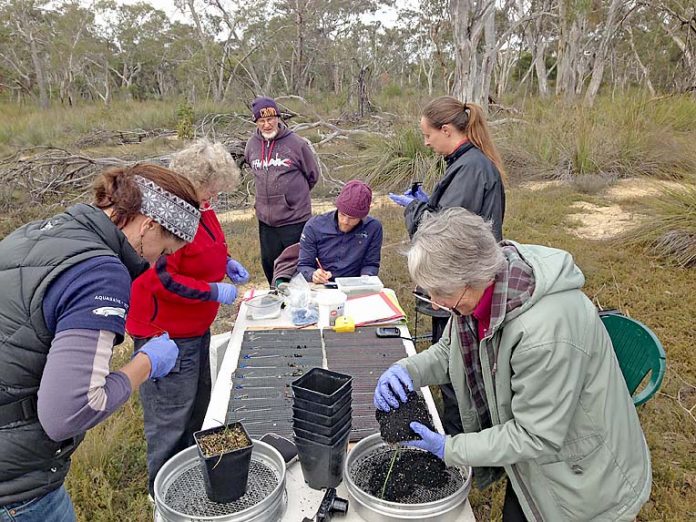

FIVE threatened species of native orchids have had a boost thanks to a five-year project aimed at increasing their wild populations.
The project to grow and plant the orchids is a collaboration between the South East Natural Resources Management Board, Natural Resources South East and Nature Glenelg Trust (NGT), funded by the Australian Government’s National Landcare Program.
NGT Ecologist Bryan Haywood said they focused on five rare species – the metallic sun-orchid, swamp green-hood, elegant spider-orchid, Maroon Leek-orchid and Little Dip spider-orchid.
“The Little Dip spider-orchid is of particular interest, as the South East of South Australia is the only place in the world that it is found,” Mr Haywood said.
“It is one of a group of orchids pollinated by a specific wasp. The male wasps are deceived into thinking the orchid is a female wasp, then when the wasp tries to mate with it, it pollinates the flower.”
Growing, transplanting and monitoring the orchids was a big task and each orchid was labelled with a pin marker when planted to allow for future monitoring.
“We were able to return to each site and count how many leaves had emerged each year, then later in the season we would go back to see how many had flowered,” Mr Haywood said.
“We planted orchids at nine sites throughout the region and have had a fantastic result with seven populations remaining viable.
“Our annual monitoring has indicated they are still surviving, still flowering and at one site at Beachport we have had new orchids appear.”
The orchid initiative forms part of the larger Restoring Under-represented Ecological Communities project, supported by the South East Natural Resources Management Board, through funding from the Australian Government’s National Landcare Program







